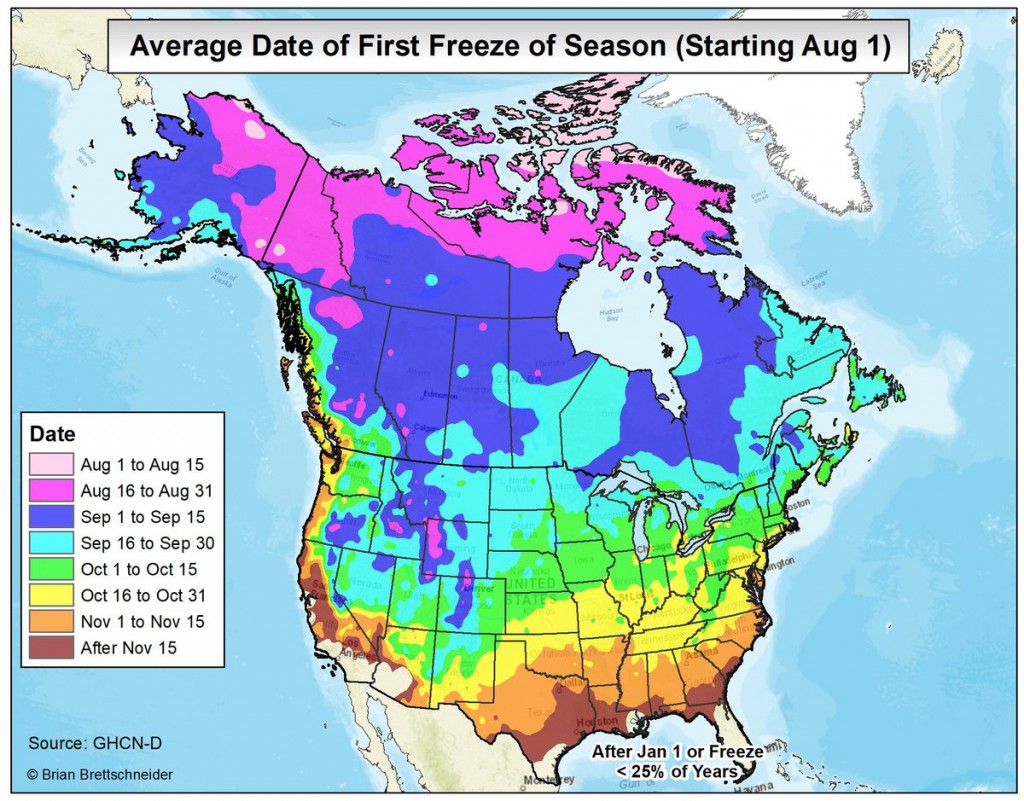A Threefer. First up, AgWeb:
How Likely is an Early Frost?
Given the late start most crops got this year, many producers are worried about the possibility of an early frost. However, Ed Vallee of Empire Weather says the atmosphere is indicating the first frost will most likely be normal for the Corn Belt.Next up from NOAA, the temperature model runs for the weeks ending August 26 (top) and September 2 (bottom) as we approach first frost
“El Nino and La Nina are the biggest indicators,” he told AgriTalk host Chip Flory. “From a research perspective, we can look at some past years, and then see what we're looking at, but the big thing we're seeing right now is we're losing El Nino.”
El Nino’s typically offer a very early frost risk, particularly across the northern Corn Belt, according to Vallee. ...MORE*

For the U.S. grain belt, approximately 50° north latitude to 30° north and 80° west longitude to 105° west; warmer than average in the first panel and cooler in the second.
Here are the median first frost dates along the Mississippi, roughly September 16 to November 15

And finally the big daddy, the Weekly Weather and Crop Bulletin, issued about 1 1/2 hours ago. (34 page PDF)
*Long time readers know what's up with the ENSO:
July 25
"Hurricane Outlook May Change For The Worse As El Niño Fades"
Earlier today:
Crop Progress Report Aug 5: Why Ag Futures Didn't Collapse On Yesterday's News